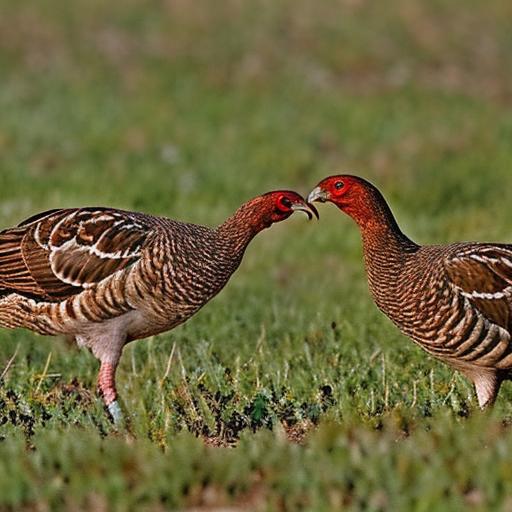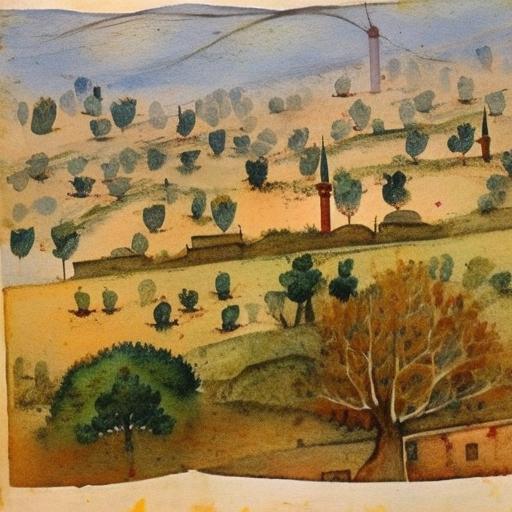The turkey breeding season is a crucial time for turkey farmers and wildlife enthusiasts alike. During this time, male turkeys, also known as toms, engage in elaborate courtship displays to attract female turkeys, or hens. These displays often involve puffing up their feathers, fanning out their tails, and making distinctive gobbling sounds to impress the hens. The hens, in turn, will select a mate based on these displays and the overall health and vitality of the tom. Once a pair has been established, the hens will begin to lay eggs, which will eventually hatch into young turkeys, or poults.
The breeding season is a natural and instinctual process for turkeys, and it plays a vital role in the continuation of the species. For turkey farmers, understanding the breeding season is essential for managing their flocks and ensuring a successful breeding season. By understanding the behaviors and needs of turkeys during this time, farmers can provide the necessary care and support to maximize breeding success and ultimately, the health and productivity of their flocks.
Table of Contents
Key Takeaways
- Turkey breeding season is the time when turkeys mate and lay eggs.
- Factors affecting turkey breeding season include daylight length, temperature, and nutrition.
- Turkey breeding season typically occurs in the spring, from March to May.
- Turkey breeding season can be identified by the behavior of male turkeys, known as toms, and the presence of nesting hens.
- The turkey breeding season is important for the continuation of the turkey population and the production of turkey meat and eggs.
- Challenges during turkey breeding season include predation, disease, and competition for mates.
- Tips for successful turkey breeding include providing proper nutrition, managing stress, and ensuring a safe and comfortable environment for mating and nesting.
Factors Affecting Turkey Breeding Season
Several factors can affect the turkey breeding season, including environmental conditions, nutrition, and genetics. Environmental conditions such as temperature and daylight length play a significant role in triggering the breeding season for turkeys. As the days grow longer and temperatures rise in the spring, turkeys are naturally stimulated to begin their breeding behaviors. Additionally, the availability of suitable nesting sites and food sources can impact the success of the breeding season. Turkeys require a diverse diet that includes grains, seeds, insects, and vegetation to maintain their health and reproductive capabilities.
Nutrition is another critical factor that can influence the breeding season for turkeys. Hens need to be in optimal physical condition to produce healthy eggs, and toms need to be strong and vigorous to compete for mates. Providing a balanced diet with the necessary nutrients is essential for supporting the reproductive health of turkeys during the breeding season. Genetics also play a role in the breeding season, as certain breeds of turkeys may have different breeding behaviors and reproductive capabilities. Selecting high-quality breeding stock with desirable traits can help improve breeding success and overall flock performance.
When Does Turkey Breeding Season Typically Occur?
The turkey breeding season typically occurs in the spring, although the exact timing can vary depending on geographic location and environmental conditions. In general, turkeys will begin their courtship displays and mating behaviors as daylight lengthens and temperatures warm up after the winter months. In some regions, the breeding season may start as early as February or March, while in other areas it may not begin until April or May.
The timing of the breeding season is closely tied to the natural cycles of the environment, as turkeys rely on favorable conditions for nesting and raising their young. By timing their breeding season to coincide with the availability of food and suitable nesting sites, turkeys can increase the chances of successfully raising their offspring. Understanding when the breeding season typically occurs in a specific region is important for turkey farmers and wildlife enthusiasts who want to observe or manage turkey populations.
How to Identify Turkey Breeding Season
There are several ways to identify when turkey breeding season is occurring. One of the most obvious signs is the behavior of male turkeys, or toms, as they engage in courtship displays to attract females. During this time, toms will puff up their feathers, fan out their tails, and make distinctive gobbling sounds to impress hens. Observing these displays can indicate that the breeding season is underway.
Another way to identify turkey breeding season is by looking for nesting behavior in hens. As the breeding season progresses, hens will begin to search for suitable nesting sites and lay eggs. Finding nests with eggs or observing hens exhibiting nesting behaviors can be a clear indication that the breeding season is in full swing. Additionally, listening for the sounds of gobbling toms and observing flocks of turkeys can provide clues about when breeding season is occurring in a specific area.
Importance of Turkey Breeding Season
The turkey breeding season is of utmost importance for both wild turkey populations and domestic turkey farming operations. For wild turkeys, the breeding season is essential for maintaining healthy population levels and genetic diversity. Successful reproduction during this time ensures that there will be new generations of turkeys to sustain the population into the future. Additionally, healthy turkey populations play a crucial role in maintaining ecological balance and supporting biodiversity in their natural habitats.
For turkey farmers, the breeding season is critical for ensuring the productivity and profitability of their flocks. A successful breeding season leads to a new generation of poults that will grow into marketable turkeys or productive breeding stock. By carefully managing the breeding season, farmers can maintain healthy flocks, improve genetic traits, and ultimately, sustain their operations over time.
Challenges During Turkey Breeding Season

While the turkey breeding season is a time of excitement and anticipation, it also presents several challenges for both wild turkeys and domestic turkey farmers. One of the primary challenges during this time is predation on nests and young poults. Many predators such as raccoons, foxes, and birds of prey target turkey nests and young poults as easy sources of food. Protecting nests and young poults from predation is essential for ensuring successful reproduction and maintaining healthy turkey populations.
Another challenge during the breeding season is disease management. As turkeys become more active and congregate during this time, there is an increased risk of disease transmission within flocks. Farmers must be vigilant about monitoring for signs of illness and implementing biosecurity measures to prevent disease outbreaks that could impact breeding success.
Tips for Successful Turkey Breeding
For both wild turkey enthusiasts and turkey farmers, there are several tips for ensuring a successful turkey breeding season. Providing suitable habitat with ample food sources and nesting sites can help support wild turkey populations during this critical time. Creating buffer zones around nesting areas can also help protect nests from disturbance and predation.
For turkey farmers, ensuring that hens have access to high-quality nutrition and proper care is essential for maximizing breeding success. Monitoring flock health, implementing biosecurity measures, and managing predator threats are all important aspects of successful turkey breeding management.
Overall, understanding the factors that influence turkey breeding season and taking proactive measures to support healthy reproduction are key to sustaining wild turkey populations and ensuring productive turkey farming operations. By working to overcome challenges and capitalize on opportunities during this critical time, both wild turkeys and domestic turkey flocks can thrive and contribute to vibrant ecosystems and sustainable food production systems.
If you’re interested in learning more about turkey breeding season, you may also want to check out this informative article on chicken coop run plans. Understanding the importance of providing a suitable environment for your poultry can also be beneficial when it comes to turkey breeding.
FAQs
What is the turkey breeding season?
The turkey breeding season typically occurs in the spring, usually from March to May. This is when turkeys are most active in mating and nesting.
Why is the turkey breeding season in the spring?
The turkey breeding season occurs in the spring because it aligns with the natural reproductive cycle of turkeys. During this time, the days are longer, temperatures are warmer, and food sources are more abundant, creating optimal conditions for mating and nesting.
How do turkeys breed during the breeding season?
Male turkeys, known as toms, display elaborate courtship behaviors to attract females, known as hens. Once a hen is receptive, mating occurs through a brief but intense interaction. After mating, the hen will begin to search for a suitable nesting site.
What happens after the turkey breeding season?
After the breeding season, hens will lay their eggs in a nest and incubate them for about 28 days. Once the eggs hatch, the poults (baby turkeys) will be cared for by the hen until they are old enough to fend for themselves.
Meet Walter, the feathered-friend fanatic of Florida! Nestled in the sunshine state, Walter struts through life with his feathered companions, clucking his way to happiness. With a coop that’s fancier than a five-star hotel, he’s the Don Juan of the chicken world. When he’s not teaching his hens to do the cha-cha, you’ll find him in a heated debate with his prized rooster, Sir Clucks-a-Lot. Walter’s poultry passion is no yolk; he’s the sunny-side-up guy you never knew you needed in your flock of friends!







